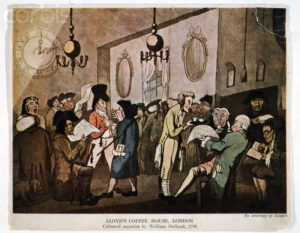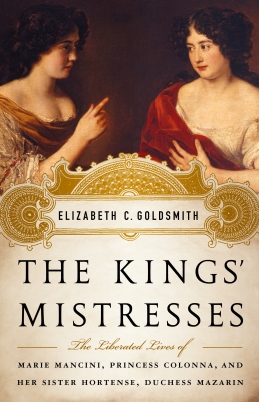by Elizabeth C. Goldsmith (Regular Contributor)
Travelers to distant lands have always known that risk is an inevitable part of the adventure. And from ancient times they invented ways to mitigate that risk. Medieval English guilds established funds to provide for their members in the event of accident when they were abroad. Fifteenth-century pilgrims would ensure themselves against captivity. For a certain payment, the insurer would agree to ransom the traveler should he be captured by pirates or Arabs.
 As travel expanded, individual traveler’s insurance took on the form of a bet on their own survival – a broker would take a specific amount and agree to pay it back with substantial interest if the traveler returned. The risks of travel were so high that it was usually assumed impossible to purchase insurance that would pay out to someone else if the traveler did not come home.
As travel expanded, individual traveler’s insurance took on the form of a bet on their own survival – a broker would take a specific amount and agree to pay it back with substantial interest if the traveler returned. The risks of travel were so high that it was usually assumed impossible to purchase insurance that would pay out to someone else if the traveler did not come home.
By the end of the seventeenth century in England, something closer to a modern
insurance system was developing. After the great fire in London in 1680, fire insurance became available. The Royal Exchange, incorporated in 1720, started to offer life insurance. Lloyd’s coffee house was a place where seafaring captains could share shipping news and negotiate private contracts to cover the risk of shipwreck or violent conflict encountered on their trade routes. Maritime insurance expanded. Captains were able to insure their own lives along with the life of their ships.
But insurance still bore a close resemblance to gambling. In a coffee house or a bank, people could buy “insurance” against almost anything, including the adultery of a spouse or treachery of a friend. Many insurers were simply speculators and gamblers. Insurance underwriters would issue policies on the outcome of battles or sensational trials or the sequence of the king’s mistresses. In almost every country except England, life insurance was viewed simply as a wager, and was illegal.
It was not easy, either, to determine the premiums for life insurance in eighteenth-century England. Mortality statistics were available but often disputed. Life expectancy was highly variable but generally low. With an increasing number of ships travelling the globe, though, and reliable records of shipwrecks, it was possible to make risk estimates for ordinary travelers going to different parts of the world. Insuring one’s life on a trip to France or Spain was much cheaper than for a voyage to the Bahamas. If you wanted to be insured on a trip to North Carolina it was even more expensive. 
The uneasy association of life insurance, gambling, and travel can be seen in early accounts of cheating and fraud. Newspapers caricatured women obsessed with gaming or winning the lottery, who busied themselves with mathematical calculations that would enhance their chances. Insurance fraud perpetuated by traveling women seems to have been particularly feared. Life insurance was not simply for the patient wife left behind while her husband traveled the globe. The images of gambling women were echoed in stories of women who traveled to distant lands, made calculated marriages, bought expensive life insurance policies on their husbands, then moved to another location to repeat the scenario after their husbands had died.
 In order for insurance to really take hold as an institution, it was necessary for it to start being regarded by middle-class wage earners as an expenditure that was both virtuous and the personally responsible thing to do. It also had to be understood not as a gamble but as a prudent, risk-averse choice. By the nineteenth century, churches and banks both worked to persuade citizens of their responsibilities to their families. Even mathematicians, who contributed to the development of actuarial tables, were enlisted to sing the virtues of insurance. In his treatise on probability, Pierre Laplace described insurance as “advantageous to morals, in favoring the gentlest tendencies of nature.”
In order for insurance to really take hold as an institution, it was necessary for it to start being regarded by middle-class wage earners as an expenditure that was both virtuous and the personally responsible thing to do. It also had to be understood not as a gamble but as a prudent, risk-averse choice. By the nineteenth century, churches and banks both worked to persuade citizens of their responsibilities to their families. Even mathematicians, who contributed to the development of actuarial tables, were enlisted to sing the virtues of insurance. In his treatise on probability, Pierre Laplace described insurance as “advantageous to morals, in favoring the gentlest tendencies of nature.”
For further reading: Lorraine Daston, Classical Probability in the Enlightenment (1988); John Francis, Annals, Anecdotes, and Legends: A Chronicle of Life Assurance (1853).
Elizabeth C. Goldsmith writes on the history of autobiography, women’s writing, letter correspondences, and travel narrative. Her most recent book is a biography of the sisters Hortense and Marie Mancini, The Kings’ Mistresses: The Liberated Lives of Marie Mancini, Princess Colonna and her sister Hortense, Duchess Mazarin. She is Professor Emerita of French Literature at Boston University.



